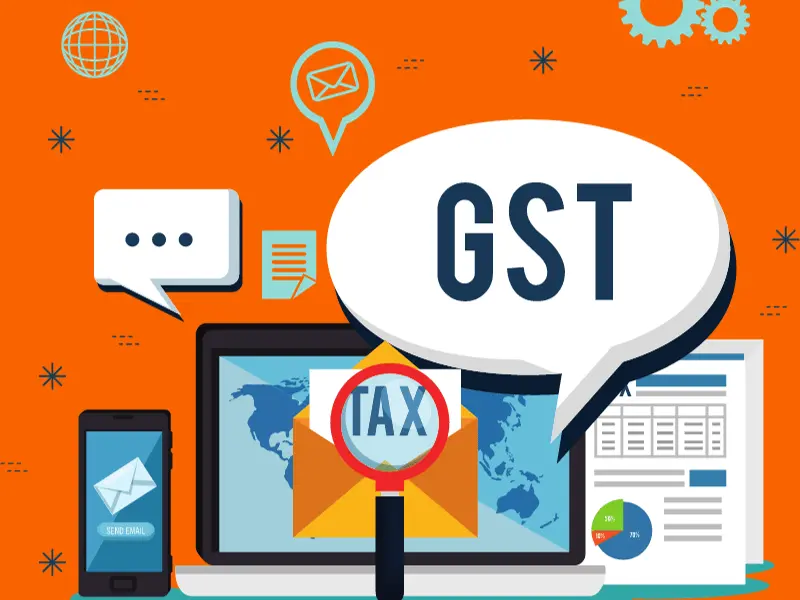GST (Goods and Services Tax) Guide

Goods and Services Tax, is a consumption tax that has been adopted in many countries across the globe. It simplifies the previous system of multiple indirect taxes by introducing uniform rates for goods and services. Benefits include reduced tax cascading, increased compliance, and economic growth; however, it can also impact consumer prices, business processes, and the overall economy.
Learning about this policy comes with understanding its potential implications for consumer prices, business processes, and the overall economy as well. Read our blog post for full information on how to calculate and understand GST in more detail.
Understanding GST and its Global Impact
The Goods and Services Tax (GST) is a value-added tax levied on the majority of goods and services sold for domestic consumption. It is paid by consumers, but it is remitted to the government by the businesses selling the goods and services. The implementation of GST has brought significant changes in tax landscapes across various countries, including Australia, New Zealand, Canada, Singapore, and India.
GST global Prospective
Looking ahead, the future of GST hinges on continuous updates and reforms, tailored to each country’s unique economic context. The history of GST indicates that it has been a transformative force in diversifying revenue sources and simplifying the tax structures. As countries continue to adapt their GST systems, further changes are expected, shaping the future of global tax landscapes.
Try to use our:
Explore the benefits of GST Credits
GST Credits, also known as Input Tax Credits (ITC), are a core part of the GST system, offering several advantages to businesses. They allow a business to reclaim the GST paid on their business expenses, effectively reducing the overall tax paid and improving cash flow. Moreover, ITC promotes compliance as businesses are incentivized to ensure their suppliers are GST-compliant to claim the credit. It also curbs the cascading effect of taxes, making the tax system more fair and streamlined.
GST Registration
Businesses surpassing a certain income level are required to register for GST. This registration enables the seamless transfer of Input Tax Credit, permits the legal collection of tax from customers, and facilitates the conveyance of the tax credit for the goods/services supplied to the buyers or recipients.
The process of GST registration varies from country to country, reflecting the unique economic and business landscapes of each nation. Comparing Australia, New Zealand, and India, it is evident that all three nations place a high emphasis on GST registration for maintaining financial transparency and compliance.
Read more about:
Impact of GST on Different Sectors – How Does It Affect the Economy
The Goods and Services Tax (GST) has a substantial impact on various sectors, fostering economic growth. By unifying multiple taxes, GST mitigates the tax burden on manufacturing and distribution sectors, boosting their competitiveness. For the service sector, it simplifies taxation, prompting compliance. For consumers, GST’s transparent nature curtails hidden taxes, reducing overall costs. Overall, GST induces a ripple effect on the economy, promoting productivity and economic growth while enhancing the ease of doing business.
The GST’s impact on businesses has been significant, altering their operational landscapes. For solo traders, the burden of tax compliance has increased due to the complexity of GST filing. Small businesses, though potentially benefitting from input tax credit, grapple with increased administrative costs. Moreover, larger companies, while benefitting from uniform tax rates, face challenges with the transition to the new tax regime.
Tips on how to determine your GST liability
Determining your GST liability is a critical aspect of managing your financial obligations as a business. Begin by understanding the nature of your goods and services and their corresponding GST rates. Remember, different items can attract different tax percentages, and being aware of these is crucial.
Engaging a professional tax advisor can be of immense help, particularly if your business transactions are complex. Additionally, leverage technology to your advantage. The Goods and Services Tax (GST) significantly influences various sectors, stimulating economic advancement. Maintain precise records of your commercial activities, including sales and acquisitions, to accurately compute your GST.
There are numerous GST accounting software choices available that can automate the calculation procedure, reducing error probability and conserving time. Remember, understanding your GST liability not only keeps you in compliance with tax laws but also helps you plan your business finances better.
Discuss challenges and criticisms of GST
However, despite its potential, the GST system is not without its criticisms and challenges. The foremost concern is the diversity of tax rates. The current GST structure comprises five tax slabs, leading to confusion and complexity for both businesses and consumers.
Additionally, the implementation of GST has been marred by technological glitches and administrative hiccups. This has resulted in hurdles in filing returns and delays in tax refunds, which in turn affects the cash flow of businesses.
FAQ
Final Verdict
Simplify the tax system with the Goods and Services Tax (GST). Learn how it’s calculated and its impact on different sectors. Discover the benefits and challenges of GST compliance. Stay updated with regular reformulations to meet changing economic needs. Every sector can maximize benefits and mitigate risks with greater awareness of this taxation system. Let’s educate others and highlight the significance of GST in our society for a better future.

